
Publications Best Practices In Merger Integration
- Publications
Best Practices In Merger Integration
- Bea

SHARE:
By Catherine Dixon – The Intersect Group
Best Practices Summary
- Establish Strategic Framework for Decision Making
- Dedicate Integration Resources
- Frequently Assess Cultural Progress
- Communicate Early and Often
— Spell out “Non-Negotiables” as early as Possible
— Jointly formulate a 100 Day Integration Plan
— Communicate to all Employees, Customers, Suppliers
• Measure Performance Versus Proforma
• Focus on Priorities
— Objectively and Systematically identify the highest priority Synergies
— Those with Highest Value + Probability of Success
Move Quickly – everyone is expecting changes
Key Steps in Acquisition Integration
Align Strategy
- Understand Acquiror, Target and Deal Synergies
- Define Success
- Confirm Leadership Commitment
Identify Culture
- Assess Cultural Differences
- Identify “Keeps” and “Gives” for Both Organizations
Dedicate Resources
- Create A+ Teams to Lead Integration Initiatives
- Agree Roles & Responsibilities; Tie to Strategy
- Measure Team Performance and Task Completion
Initiatives/Action Plans
- Define and Prioritize Initiatives
- Develop Detailed Action Plans for Achieving Synergies
Execution
- Define Desired End State
- Set Metrics and Monitor Team Progress
- Transition to Operations
Manage Information
Aligning Strategy and People
Timeline
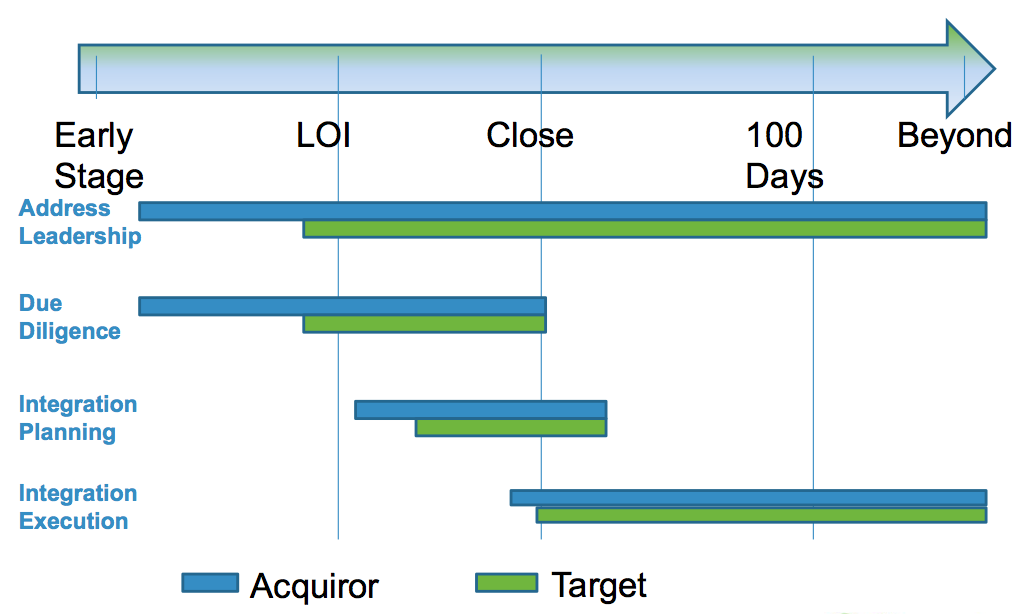
The Wrong Way
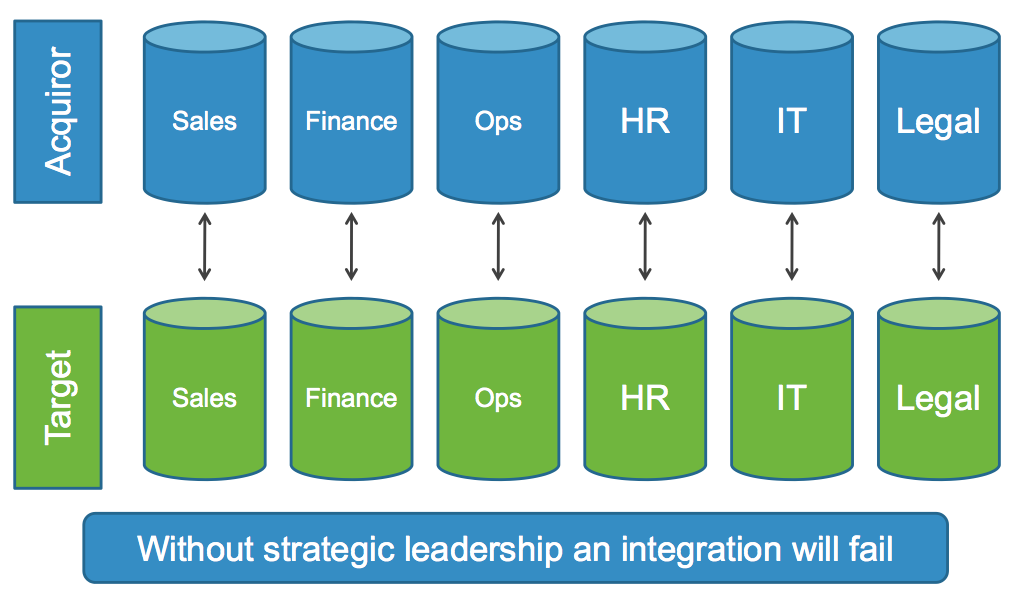
The Right Way
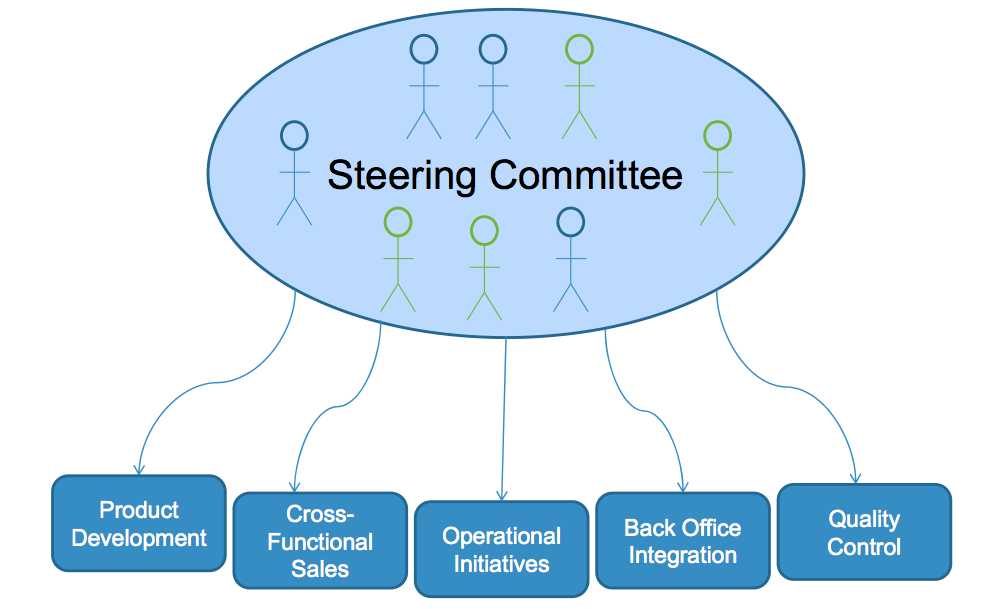
Dedicating Resources
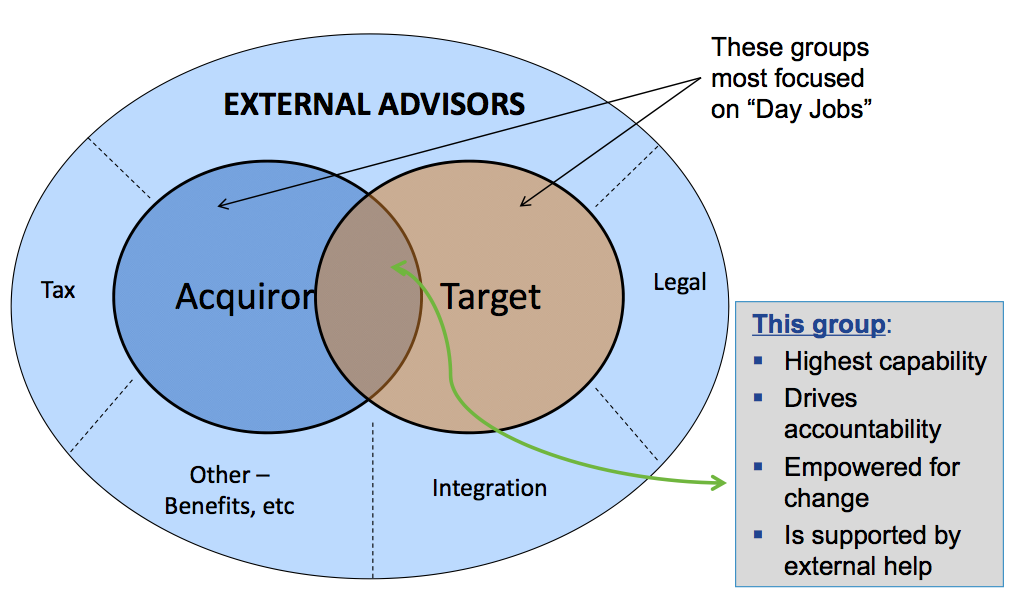
Cultural Considerations
• Cultural integration…
— Spans all functional areas
— Is not an event; it is an interactive, complex process
— Takes a long time
• Commitment is critical to success
— 80% of integration problems relate to cultural issues
• Teamwork is important throughout
• When in doubt, err towards over-communicating
Ways to Reinforce and Create Culture
1. Rules and Policies
2. Goals and Measures
3. Rewards and Recognition
4. Staffing and Selection
5. Training and Development
6. Events
7. Leadership Behavior
8. Communications
9. Physical Environment
10. Organizational
Communication
• Focus on formulating and telling the story
— Consistency and frequency of communication is key
• Target personnel have often been disappointed by previous buyers
• Introduction should start broad then narrow to functional information
• Understand the impact of integration on the business – burnout is often an issue
Initiatives and Execution
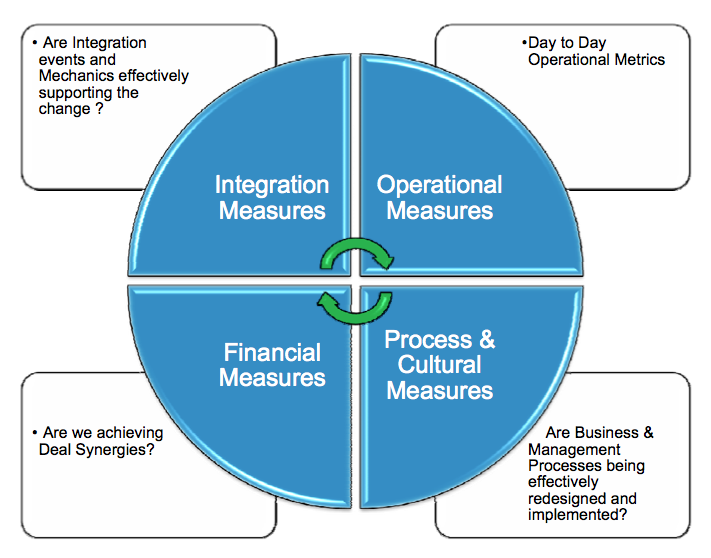
Implications of Legal Documents
Definitive Agreement
• Earnout structure and measurement
— Revenue and gross margin versus EBITDA
— Months, not years
• Post-closing tax matters
Transition Services
• Encourage and incentivize rapid decoupling of systems
• Penalties for delays
Employment Agreements
• Incentives – sales, stock-related compensation, bonuses
• Address potential for departure, role shift
• Signed by close of deal
TAGS:


Stay up to date with M&A news!
Subscribe to our newsletter


